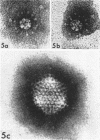Abstract
Five different soluble components of adenovirus types 9, 9-15, and 15 have been identified. These are: (i) a slowly sedimenting, trypsin-resistant, incomplete hemagglutinin (HA). (This component was demonstrable by hemagglutination-enhancement (HE) tests in the presence of heterotypic antisera against members of Rosen's subgroups II and III, but not of subgroup I); (ii) a slowly sedimenting, trypsin-resistant, complete HA, causing only a partial agglutination of cells; (iii) a rapidly sedimenting, incomplete HA, demonstrable by HE tests in the presence of heterotypic antisera against members of all Rosen's subgroups. (Trypsin treatment of this component caused a conversion into slowly sedimenting incomplete HA); (iv) a group-specific complement-fixing (CF) antigen devoid of HA activity; and (v) a rapidly sedimenting, trypsin-sensitive, complete HA, which in the electron microscope was found to represent a dodecahedral aggregate of 12 pentons (a dodecon). On the basis of their biological and physicochemical characteristics, the first four components were interpreted to represent (i) fibers, (ii) a polymer of a few, probably two, fibers, (iii) pentons, and (iv) hexons, respectively. The length of fibers extending from dodecons and virions was estimated to be 11 to 14 nm. A similar value was suggested from exclusion chromatography experiments. Adenovirus types 9 and 15 fibers were recovered in a position intermediate to that of fibers of types 3 and 4, the lengths of which are 10 and 17 nm, respectively. The sequence of elution of different components of types 9 and 9-15 from an anion exchanger was fibers, fiber-aggregate, pentons, hexons, and dodecons. Type 15 components appeared in the same order except for the fact that dodecons eluted before hexons. The molarities of NaCl required to elute the different types 9 and 9-15 components, excluding hexons, were identical. They were distinctly different from those of the corresponding type 15 components. However, hexons of all three serotypes eluted in proximity to each other and there was a slight tendency for type 9-15 hexons to take a position intermediate to those of types 9 and 15.
Full text
PDF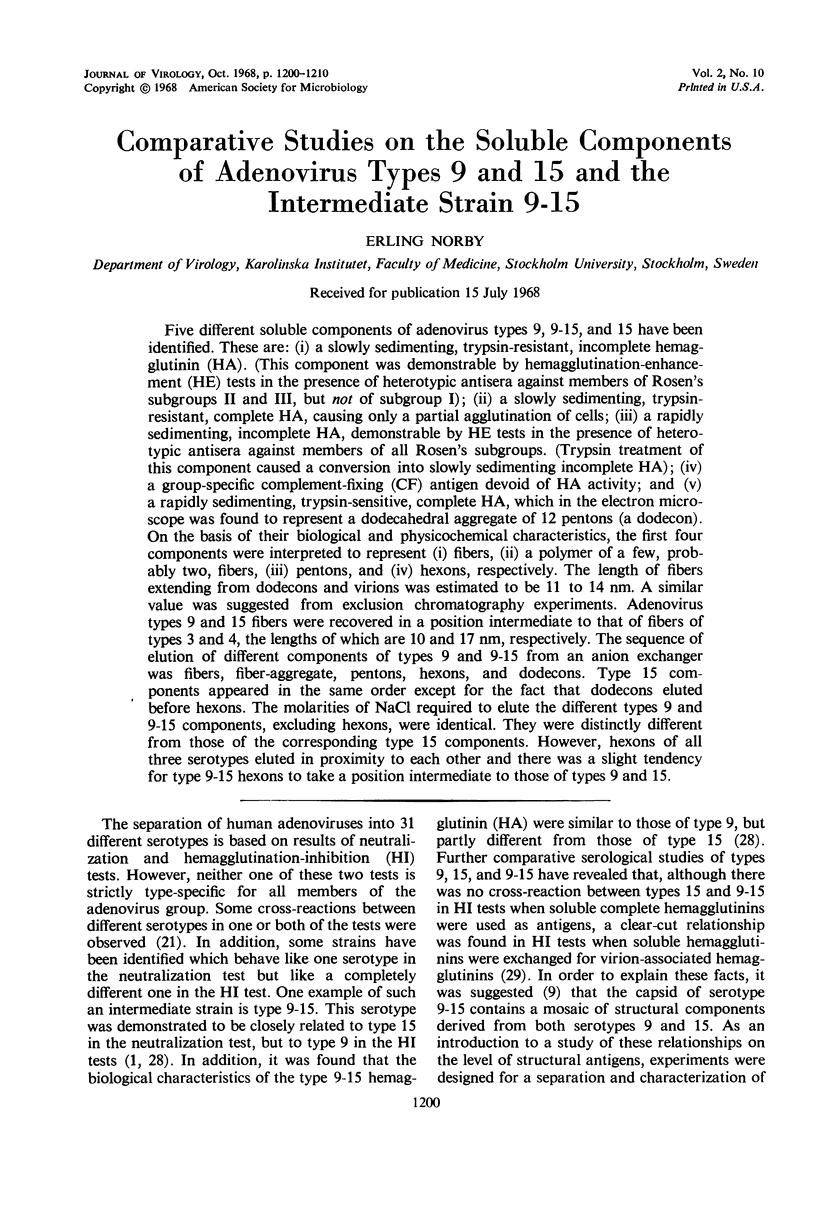
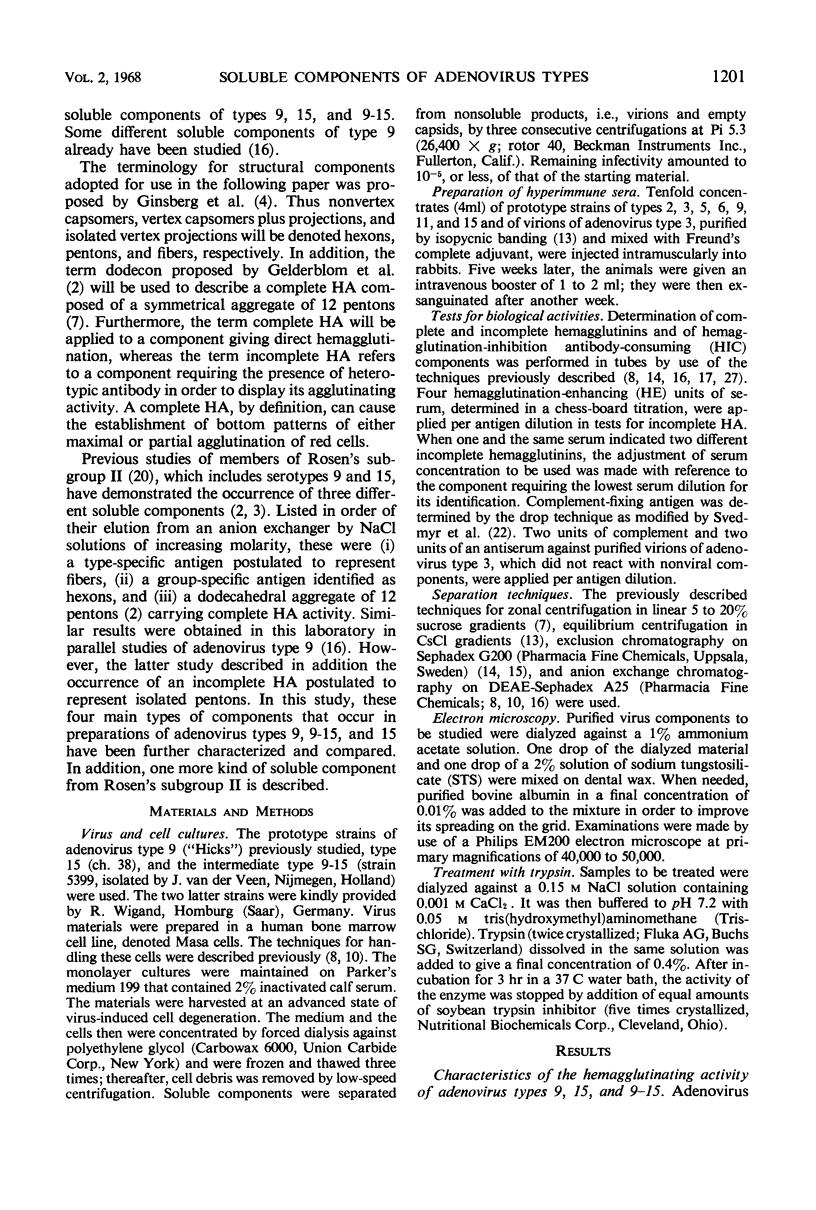
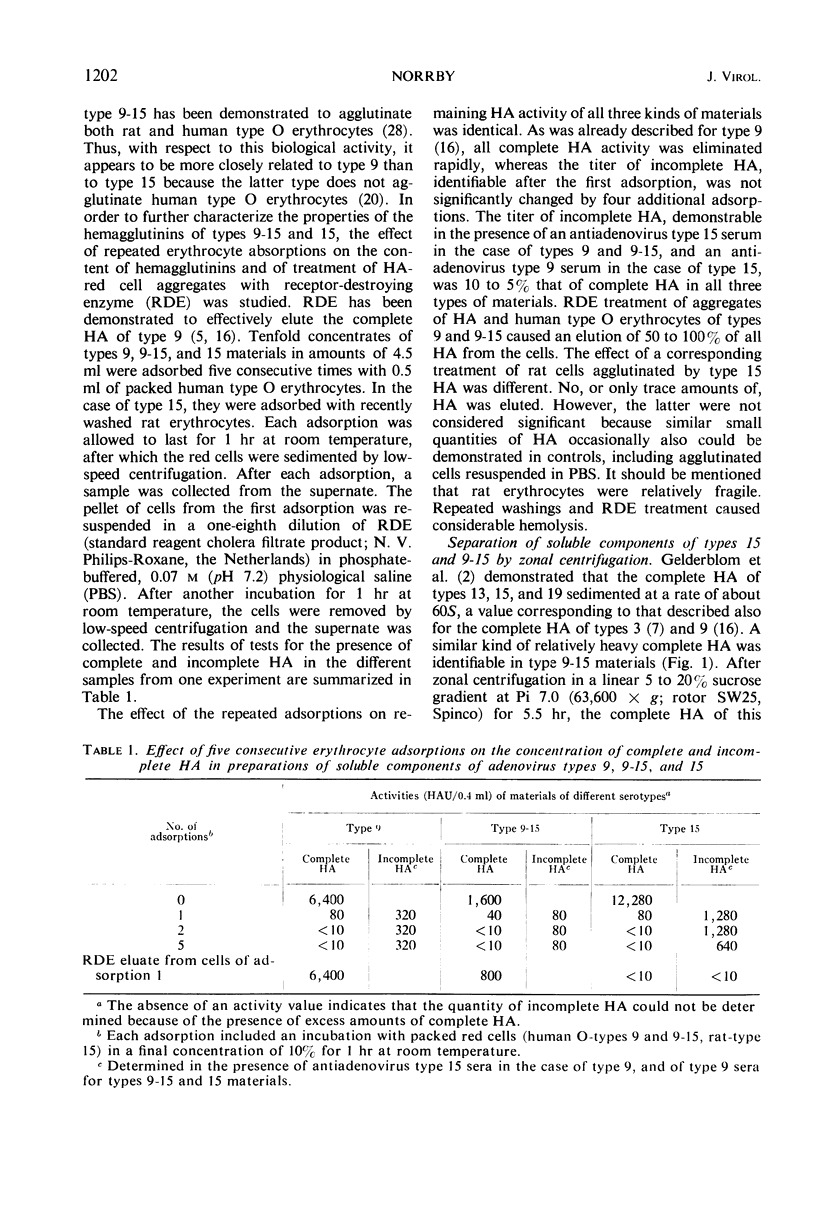
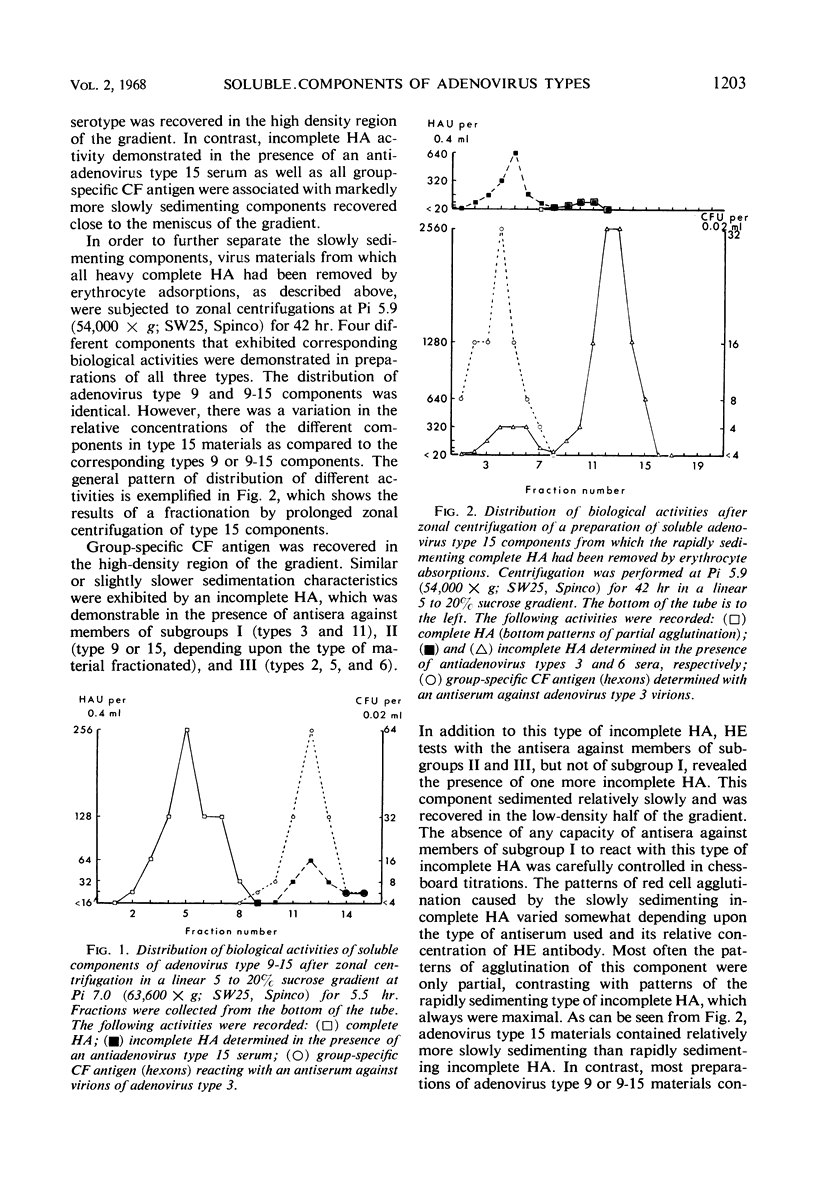



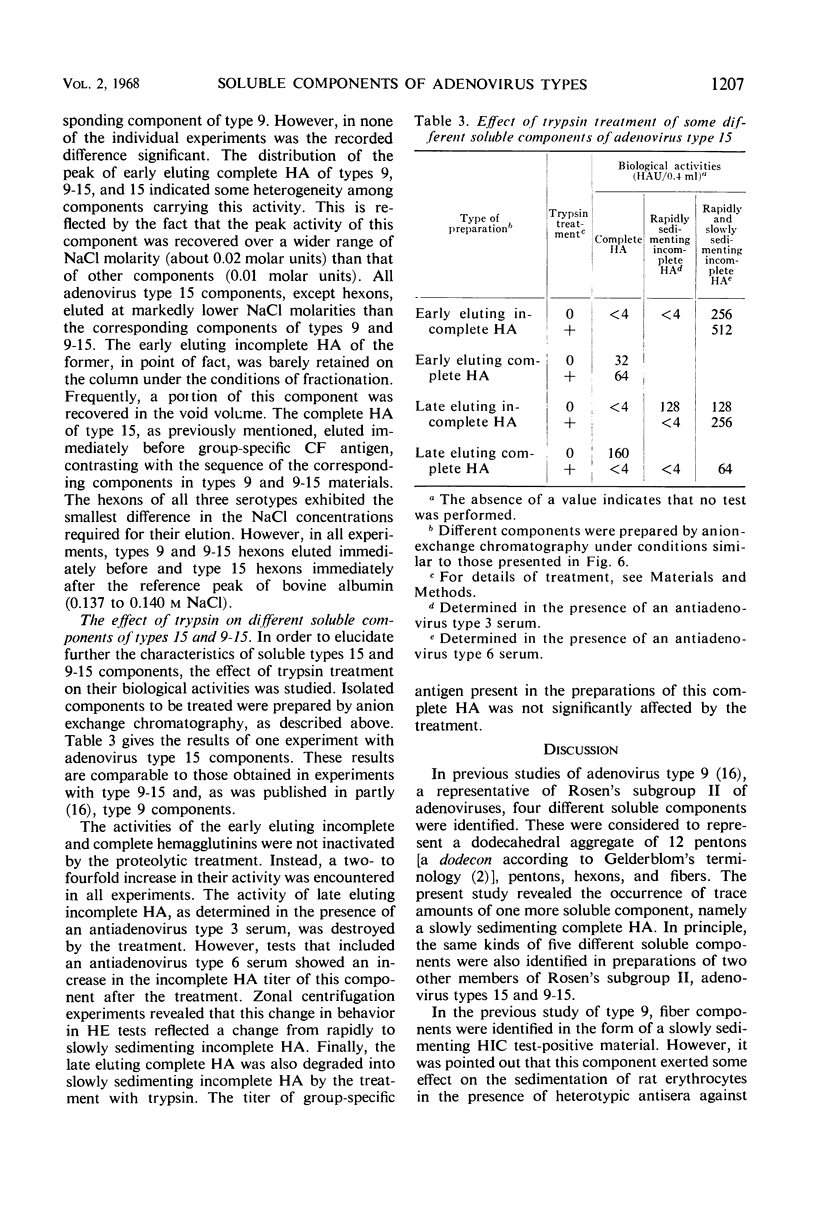
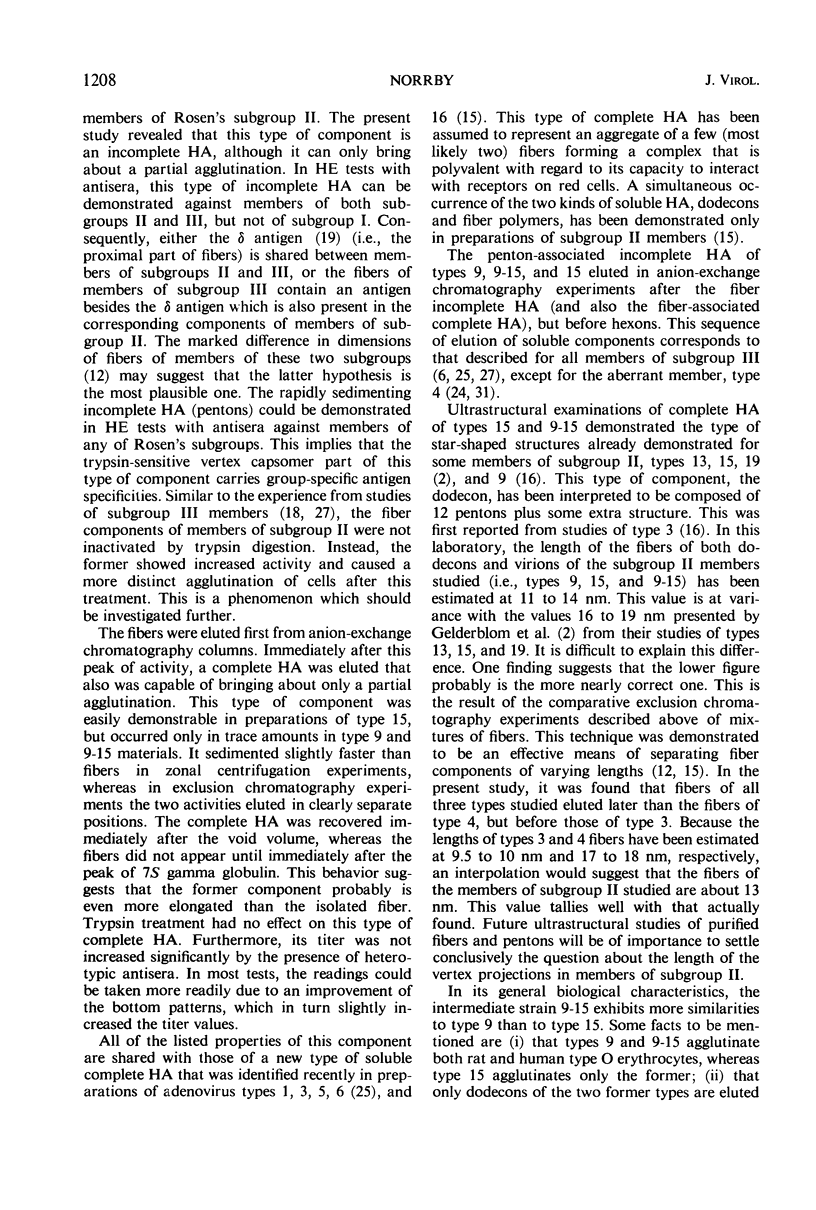
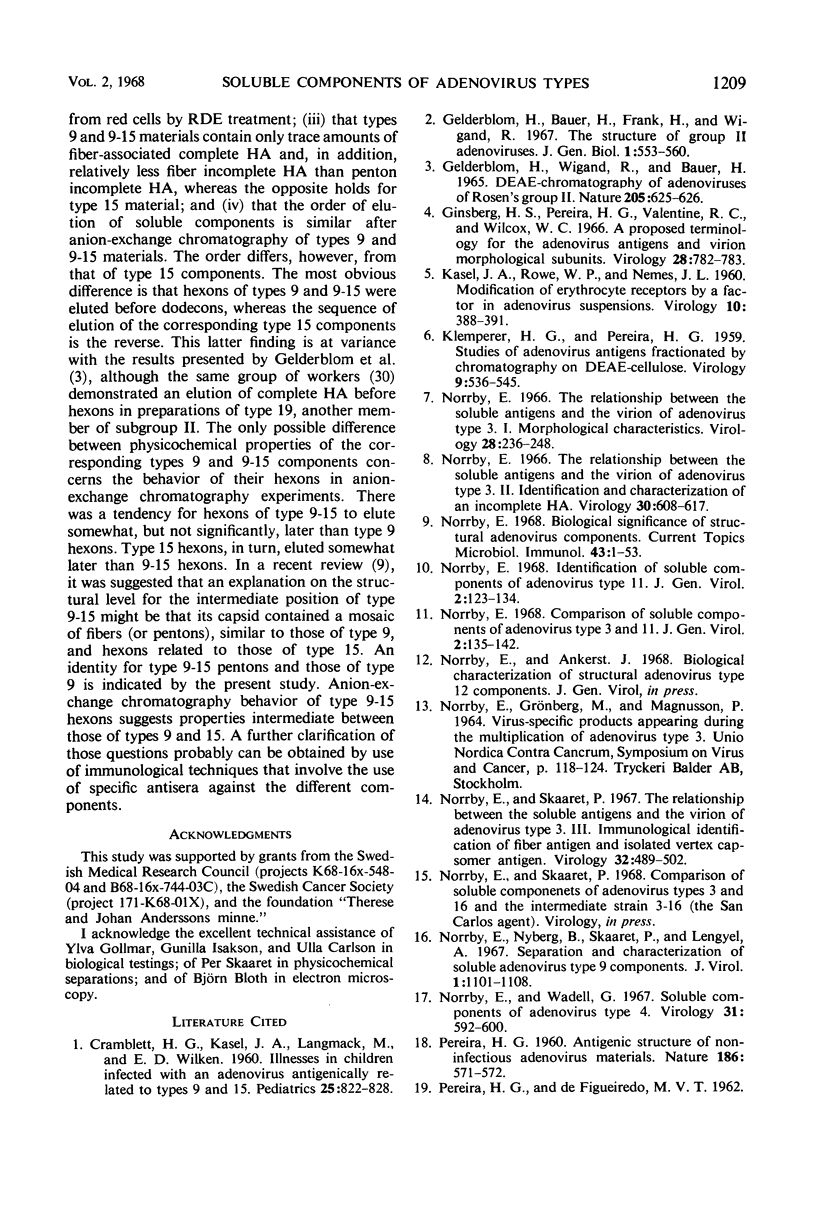
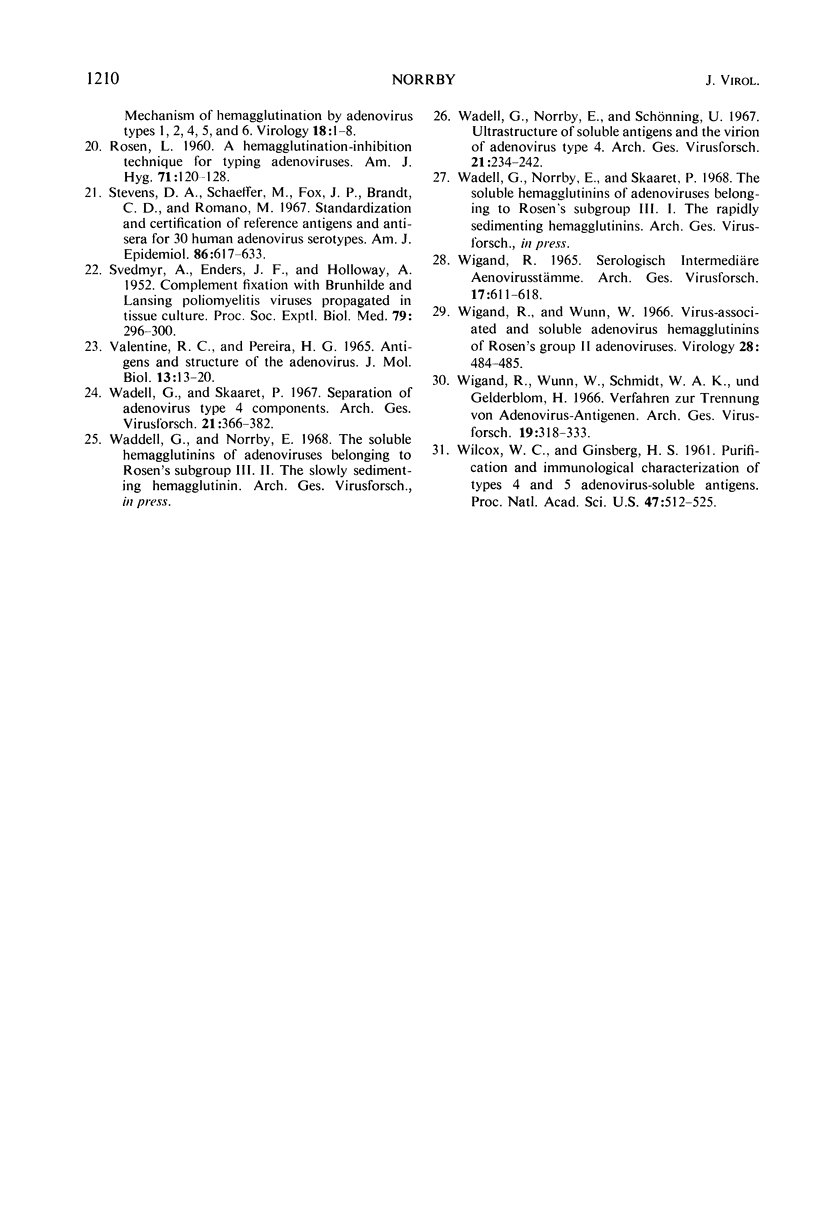
Images in this article
Selected References
These references are in PubMed. This may not be the complete list of references from this article.
- CRAMBLETT H. G., KASEL J. A., LANGMACK M., WILKEN F. D. Illnesses in children infected with an adenovirus antigenically related to types 9 and 15. Pediatrics. 1960 May;25:822–828. [PubMed] [Google Scholar]
- Gelderblom H., Bauer H., Frank H., Wigand R. The structure of group II adenoviruses. J Gen Virol. 1967 Oct;1(4):553–560. doi: 10.1099/0022-1317-1-4-553. [DOI] [PubMed] [Google Scholar]
- Ginsberg H. S., Pereira H. G., Valentine R. C., Wilcox W. C. A proposed terminology for the adenovirus antigens and virion morphological subunits. Virology. 1966 Apr;28(4):782–783. doi: 10.1016/0042-6822(66)90271-6. [DOI] [PubMed] [Google Scholar]
- KASEL J. A., ROWE W. P., NEMES J. L. Modification of erythrocyte receptors by a factor in adenovirus suspensions. Virology. 1960 Mar;10:388–391. doi: 10.1016/0042-6822(60)90035-0. [DOI] [PubMed] [Google Scholar]
- KLEMPERER H. G., PEREIRA H. G. Study of adenovirus antigens fractionated by chromatography on DEAE-cellulose. Virology. 1959 Dec;9:536–545. doi: 10.1016/0042-6822(59)90147-3. [DOI] [PubMed] [Google Scholar]
- Norrby E. Biological significance of structural adenovirus components. Curr Top Microbiol Immunol. 1968;43:1–43. doi: 10.1007/978-3-642-46118-7_1. [DOI] [PubMed] [Google Scholar]
- Norrby E. Comparison of soluble components of adenovirus types 3 and 11. J Gen Virol. 1968 Jan;2(1):135–142. doi: 10.1099/0022-1317-2-1-135. [DOI] [PubMed] [Google Scholar]
- Norrby E. Identification of soluble components of adenovirus type 11. J Gen Virol. 1968 Jan;2(1):123–133. doi: 10.1099/0022-1317-2-1-123. [DOI] [PubMed] [Google Scholar]
- Norrby E., Nyberg B., Skaaret P., Lengyel A. Separation and characterization of soluble adenovirus type 9 components. J Virol. 1967 Dec;1(6):1101–1108. doi: 10.1128/jvi.1.6.1101-1108.1967. [DOI] [PMC free article] [PubMed] [Google Scholar]
- Norrby E., Skaaret P. The relationship between soluble antigens and the virion of adenovirus type 3. 3. Immunological identification of fiber antigen and isolated vertex capsomer antigen. Virology. 1967 Jul;32(3):489–502. doi: 10.1016/0042-6822(67)90301-7. [DOI] [PubMed] [Google Scholar]
- Norrby E. The relationship between the soluble antigens and the virion of adenovirus type 3. I. Morphological characteristics. Virology. 1966 Feb;28(2):236–248. doi: 10.1016/0042-6822(66)90148-6. [DOI] [PubMed] [Google Scholar]
- Norrby E. The relationship between the soluble antigens and the virion of adenovirus type 3. II. Identification and characterization of an incomplete hemagglutinin. Virology. 1966 Dec;30(4):608–617. doi: 10.1016/0042-6822(66)90165-6. [DOI] [PubMed] [Google Scholar]
- Norrby E., Wadell G. Soluble components of adenovirus type 4. Virology. 1967 Apr;31(4):592–600. doi: 10.1016/0042-6822(67)90187-0. [DOI] [PubMed] [Google Scholar]
- PEREIRA H. G. Antigenic structure of non-infectious adenovirus materials. Nature. 1960 May 14;186:571–572. doi: 10.1038/186571a0. [DOI] [PubMed] [Google Scholar]
- ROSEN L. A hemagglutination-inhibition technique for typing adenoviruses. Am J Hyg. 1960 Jan;71:120–128. doi: 10.1093/oxfordjournals.aje.a120085. [DOI] [PubMed] [Google Scholar]
- SVEDMYR A., ENDERS J. F., HOLLOWAY A. Complement fixation with Brunhilde and Lansing poliomyelitis viruses propagated in tissue culture. Proc Soc Exp Biol Med. 1952 Feb;79(2):296–300. doi: 10.3181/00379727-79-19357. [DOI] [PubMed] [Google Scholar]
- Stevens D. A., Schaeffer M., Fox J. P., Brandt C. D., Romano M. Standardization and certification of reference antigens and antisera for 30 human adenovirus serotypes. Am J Epidemiol. 1967 Nov;86(3):617–633. doi: 10.1093/oxfordjournals.aje.a120771. [DOI] [PubMed] [Google Scholar]
- Valentine R. C., Pereira H. G. Antigens and structure of the adenovirus. J Mol Biol. 1965 Aug;13(1):13–20. doi: 10.1016/s0022-2836(65)80076-6. [DOI] [PubMed] [Google Scholar]
- WILCOX W. C., GINSBERG H. S. Purification and immunological characterization of types 4 and 5 adenovirus-soluble antigens. Proc Natl Acad Sci U S A. 1961 Apr 15;47:512–526. doi: 10.1073/pnas.47.4.512. [DOI] [PMC free article] [PubMed] [Google Scholar]
- Wadell G., Norrby E., Schönning U. Ultrastructure of soluble antigens and the virion of adenovirus type 4. Arch Gesamte Virusforsch. 1967;21(2):234–242. doi: 10.1007/BF01241447. [DOI] [PubMed] [Google Scholar]
- Wadell G., Skaaret P. Separation of adenovirus type 4 components. Arch Gesamte Virusforsch. 1967;21(3):366–382. doi: 10.1007/BF01241737. [DOI] [PubMed] [Google Scholar]
- Wigand R. Serologisch intermediäre Adenovirusstämme. Arch Gesamte Virusforsch. 1965;17(5):611–618. [PubMed] [Google Scholar]
- Wigand R., Wunn W., Schmidt W. A., Gelderblom H. Verfahren zur Trennung von Adenovirus-Antigenen. Arch Gesamte Virusforsch. 1966;19(3):319–333. [PubMed] [Google Scholar]



